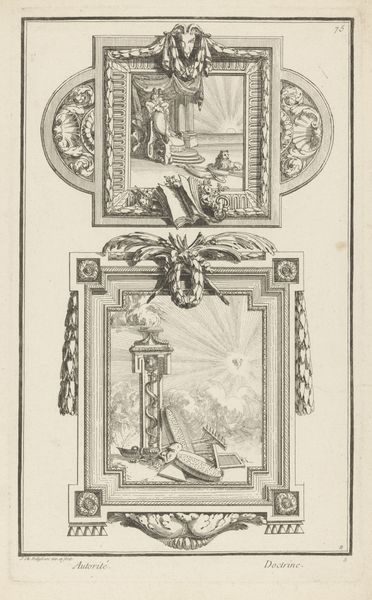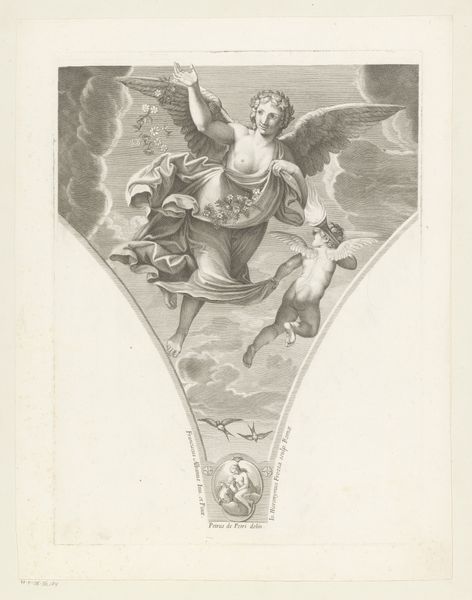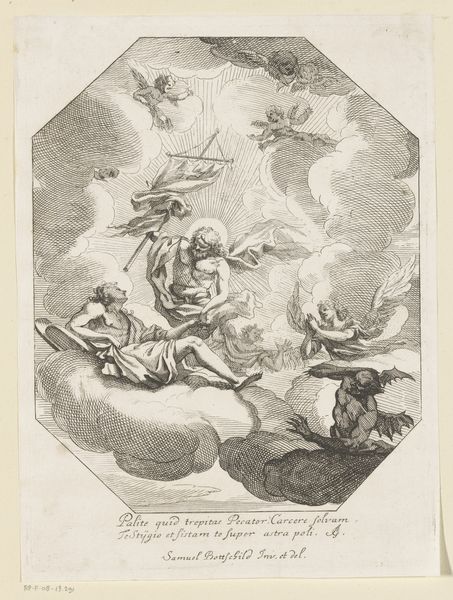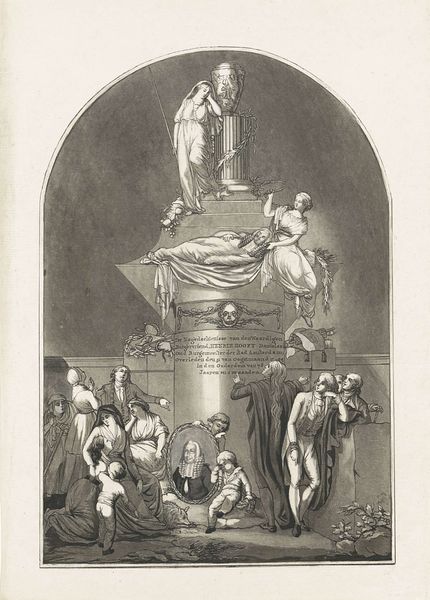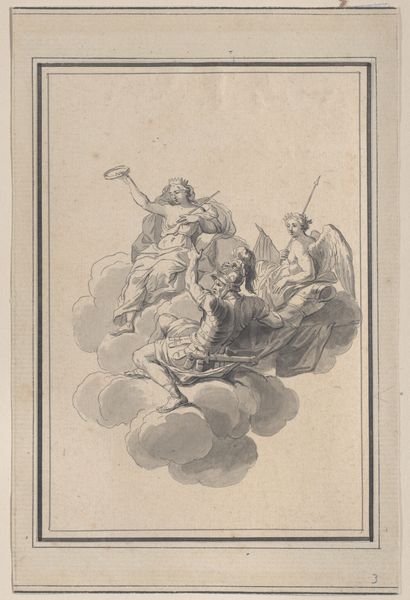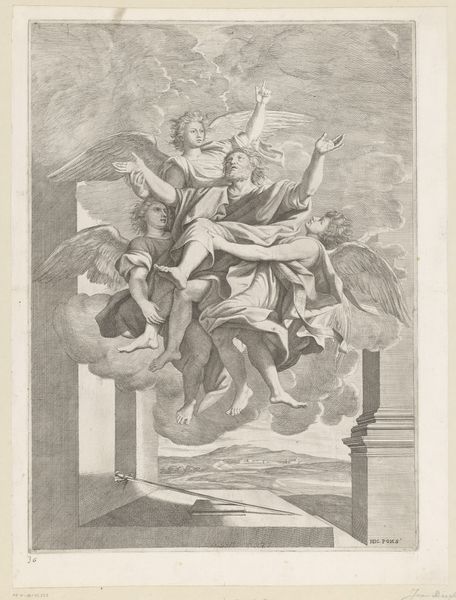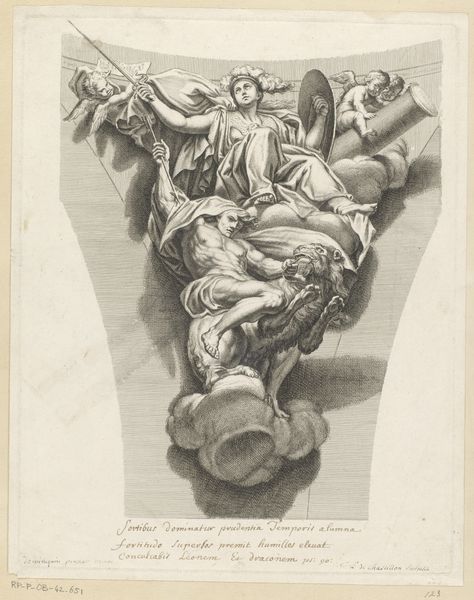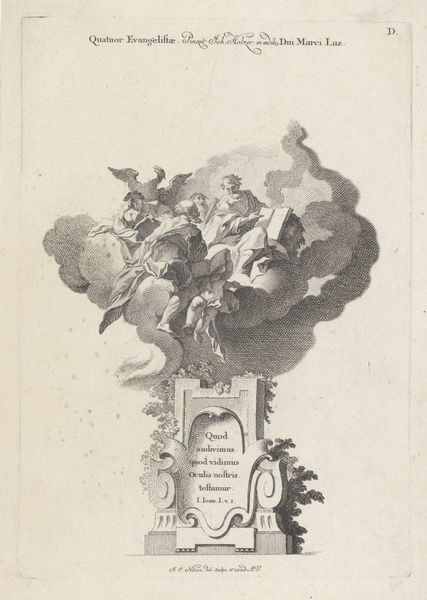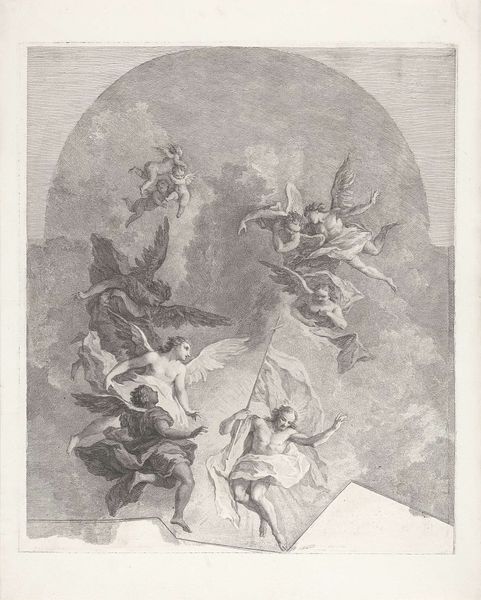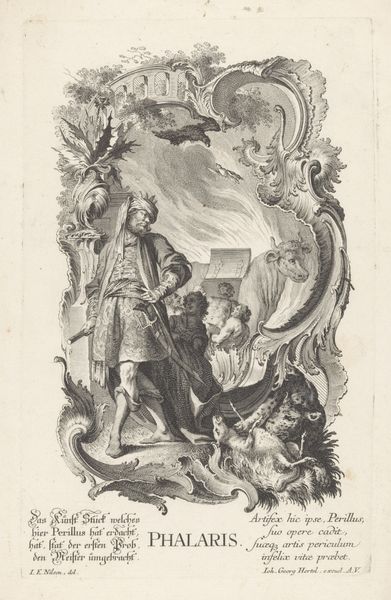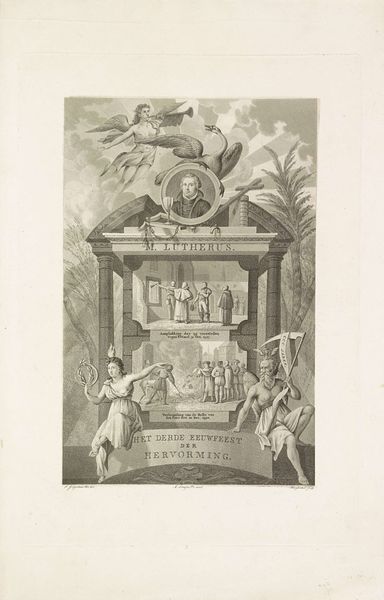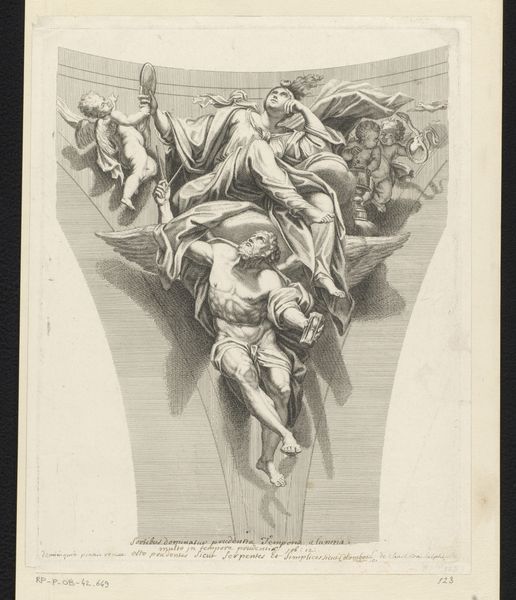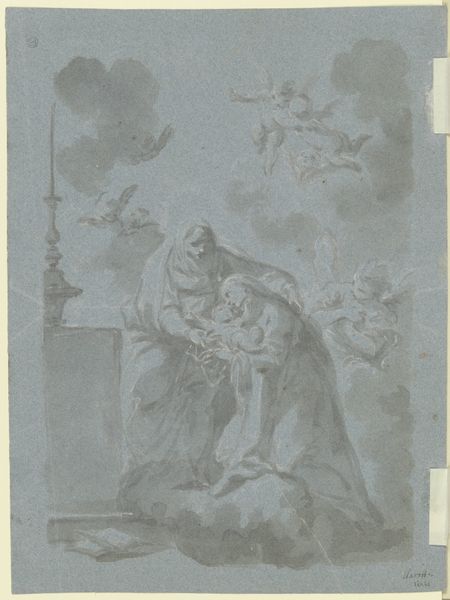
Dimensions: height 270 mm, width 182 mm
Copyright: Rijks Museum: Open Domain
Editor: This engraving, "The Trial of Abraham" by Johann Esaias Nilson, dated around 1765 to 1770, presents a powerful scene. The contrast between light and shadow is striking, creating a dramatic effect. The scene feels very staged, with many symbolic figures surrounding Abraham's sacrifice. How do you interpret this work? Curator: This image brims with the weight of inherited symbols. Observe how Abraham, caught in the act, hesitates, his body a nexus of paternal love and divine command. What feelings does that angel's intervention evoke, pulling his hand away? Editor: Relief, I suppose, maybe gratitude that Abraham doesn't have to follow through with sacrificing his son. Curator: Precisely. And consider the cloud of witnesses above. They carry divine attributes, globe and scepter. Do you see them merely as celestial beings, or could they represent a deeper collective consciousness judging Abraham’s actions? What do you feel their position within the composition signifies? Editor: I guess I see them as representative of God and his power? As divine approval of Abraham's sacrifice of faith? Curator: Indeed. Reflect on this for a moment. Abraham's ordeal is not merely a personal trial but a negotiation with collective values and moral legacies. Each visual element speaks to an unending dialogue across generations, of faith, duty, and humanity. The print makes visible the constant negotiation of shared meaning that lives at the heart of cultural continuity. Editor: So, beyond the immediate narrative, the artwork operates as a potent cultural symbol of faith and obedience, and how those ideas change. It's about cultural memory and how those images evolve through time! That's a cool interpretation. Thanks.
Comments
No comments
Be the first to comment and join the conversation on the ultimate creative platform.
